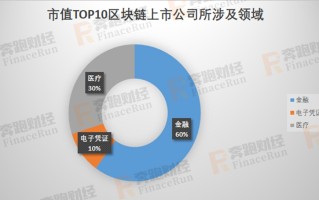Title: Understanding Blockchain Protocols: A Comprehensive Guide
Blockchain protocols serve as the backbone of decentralized systems, enabling secure and transparent transactions across various industries. In this guide, we delve into the intricacies of blockchain protocols, exploring their functionality, types, and potential applications.
What is a Blockchain Protocol?
A blockchain protocol is a set of rules and procedures that govern the interactions and transactions within a blockchain network. It defines how data is structured, validated, and updated, ensuring the integrity and security of the network. Key components of a blockchain protocol include consensus mechanisms, cryptographic algorithms, and data structures.
Types of Blockchain Protocols
1.
Public Blockchains:
Public blockchains are open networks where anyone can participate, view, and verify transactions. Examples include Bitcoin and Ethereum. They offer high transparency and decentralization but may face scalability and privacy challenges.2.
Private Blockchains:
Private blockchains are restricted networks where access is limited to authorized participants. They offer greater control over permissions and privacy but sacrifice some decentralization. Enterprise solutions often utilize private blockchains for specific use cases.3.
Consortium Blockchains:
Consortium blockchains are semidecentralized networks governed by a group of trusted entities. They strike a balance between public and private blockchains, offering controlled access while maintaining decentralization to some extent.Components of Blockchain Protocols
1.
Consensus Mechanisms:
Consensus mechanisms ensure agreement among network participants on the validity of transactions. Popular consensus algorithms include Proof of Work (PoW), Proof of Stake (PoS), and Practical Byzantine Fault Tolerance (PBFT), each with its unique characteristics and tradeoffs.2.
Cryptographic Algorithms:
Cryptography plays a crucial role in securing transactions and maintaining privacy within blockchain networks. Hash functions, digital signatures, and encryption algorithms are fundamental cryptographic tools utilized in blockchain protocols.3.
Data Structures:
Blockchain protocols employ data structures such as Merkle trees and linked lists to organize and store transaction data efficiently. These data structures facilitate rapid verification and tamper resistance, enhancing the overall security of the network.Applications of Blockchain Protocols
1.
Cryptocurrencies:
Blockchain protocols underpin the creation and transfer of digital currencies, enabling peertopeer transactions without the need for intermediaries. Bitcoin, the first cryptocurrency, introduced the world to the potential of blockchain technology.2.
Smart Contracts:
Smart contracts are selfexecuting agreements coded on blockchain platforms, automating the execution of contractual obligations based on predefined conditions. Ethereum pioneered smart contract functionality, revolutionizing industries like finance, supply chain, and real estate.3.
Supply Chain Management:
Blockchain protocols enhance transparency and traceability in supply chains by recording every stage of the product lifecycle on an immutable ledger. This ensures authenticity, reduces fraud, and enables efficient supply chain management.4.
Identity Management:
Blockchainbased identity management solutions offer a secure and decentralized approach to verifying and managing digital identities. By eliminating the need for centralized authorities, individuals gain greater control over their personal data.Considerations and Challenges
1.
Scalability:
Scalability remains a significant challenge for blockchain protocols, particularly public networks, as they struggle to handle increasing transaction volumes without sacrificing decentralization or security.
2.
Interoperability:
Achieving interoperability between different blockchain protocols is essential for the widespread adoption of decentralized applications (DApps) and crosschain transactions. Efforts are underway to develop standards and protocols for seamless interoperability.3.
Regulatory Compliance:
Regulatory uncertainty and compliance requirements pose challenges for blockchain protocols, especially in sectors like finance and healthcare. Collaborative efforts between industry stakeholders and regulators are necessary to establish clear guidelines and frameworks.Conclusion
Blockchain protocols represent a groundbreaking innovation with transformative potential across various industries. By understanding their fundamental principles, types, and applications, businesses and developers can harness the power of blockchain technology to create more secure, transparent, and efficient systems.
For further exploration, dive into specific blockchain implementations and emerging trends shaping the future of decentralized ecosystems.
标签: 区块链普通人怎么赚钱 区块链公司 区块链ppt模板 区块链交易系统开发







